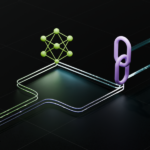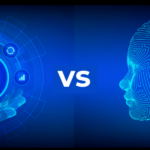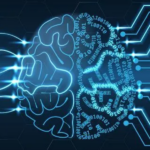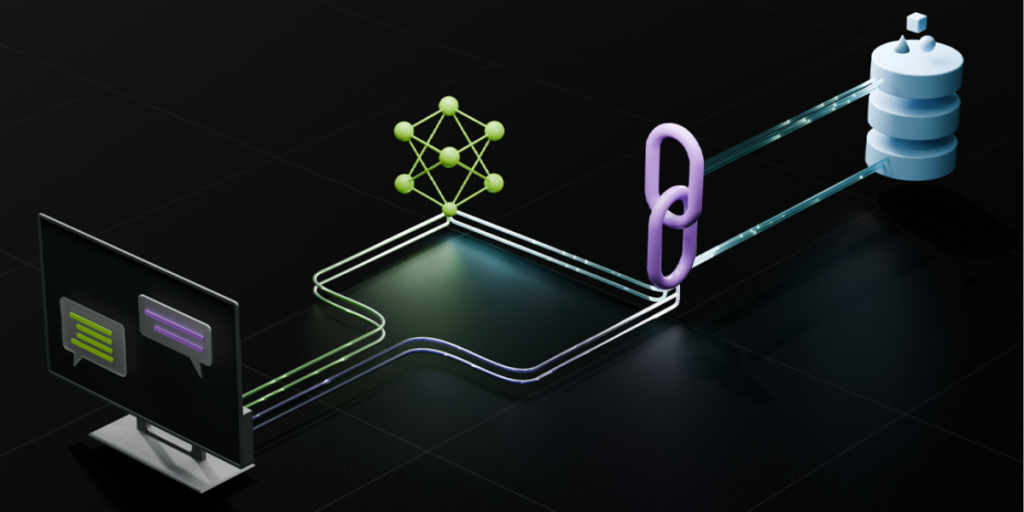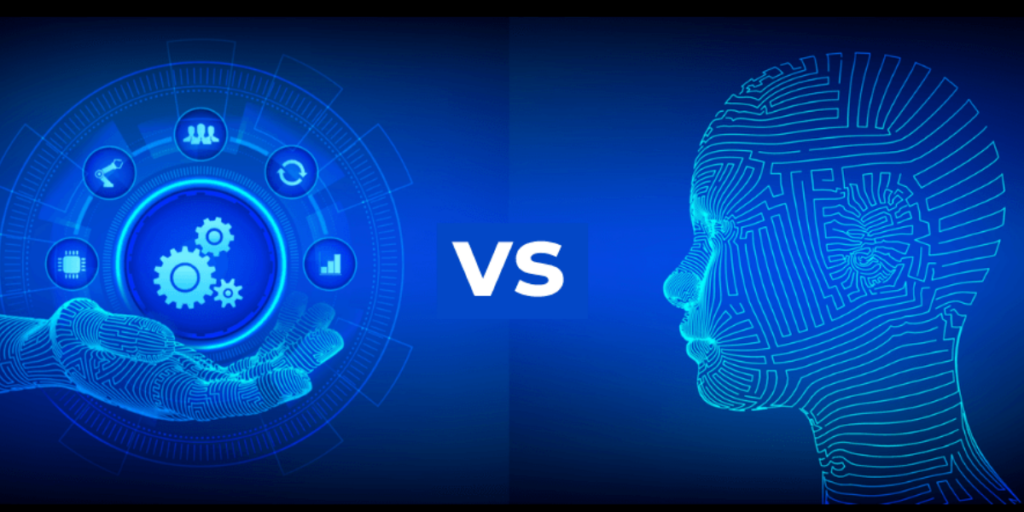In deep learning, transformer models have generated quite a bit of excitement. They have significantly improved efficiency across various AI applications ranging from NLP to computer vision. They have also created new summarization, translation, and image recognition benchmarks. However, what is beyond the excitement? Do they represent the latest AI trends, or can they provide tangible advantages over the previous systems, such as networks based on LSTM?
Innovating the field of artificial intelligence, transformer model integration is vital in a wide range of areas, from natural technology to language processing and computer vision. Being aware of the complexities and strengths of transformer structure isn’t only vital but essential to anyone interested in pushing the boundaries of AI advancement. With the advent of a new era of AI, understanding the Transformer models for the next generation of researchers and NLP experts cannot be overemphasized.
In this blog post, we’ll discuss the evolution of Transformer NLP architecture.
So, let’s get started.
What Is Transformer Model?
Transformer models belong to a distinct type of deep learning model launched in 2017. The transformer model can be described as a neural network that gains context and meaning by studying relationships between data in a sequence such as the ones in the following sentence. Transformer models use an ever-changing range of mathematical strategies referred to as attention or self-attention that can detect the subtle ways that distant elements of the same series interact and interact with each other.
In essence, the transformer models are created to handle sequential data, for instance, language or series information, much more effectively than other models, such as the recurrent neural network (RNNs) and long-short-term memory (LSTM) networks. The models can translate speech and text in close to real-time. There are, for instance, apps that allow tourists to converse with people walking around in their languages. These applications help researchers comprehend DNA and accelerate the development of new drugs. They help detect irregularities and help prevent fraud within security and finance. Vision transformers are also utilized for tasks involving computer vision.
What Can Transformer Models Do?
The use of Transformer models within AI can be extensive. They are used in a range of NLP tasks, including transcription, summarization, dialog systems, and even text generation. For example, in machine translation, Transformer models can convert a complete phrase simultaneously instead of word-by-word and preserve the original meaning and contextual context.
In the field of text generation, Transformer models have shown the ability to produce consistent and relevant texts using text prompts. They’ve been utilized to create articles, write poetry, and generate work codes. The most prominent example is OpenAI’s collection of GPT models, which entered the world of public opinion through the launch of ChatGPT.
ChatGPT and its foundational models are based on a Transformer model, and they can create a human-like language that’s nearly identical to writing by humans. The next generation of models uses Transformer structures to analyze texts and images for multi-modal operations. Furthermore, Transformer models’ capacity to deal with dependencies of a longer range makes them suitable for many different applications. For example, in bioinformatics, the models can be utilized to identify protein structures by discovering the relationships among far-off amino acids. In the finance sector, they could be used to analyze time series data to forecast stock prices or detect transaction fraud.
Key Components Of Transformer Architecture
The following are the most critical components of the Transformer architecture. Let’s have a look at each of them and how they interact.
Input Embedding Layer
The first stage of this process is to create an embedded layer for input. This layer aims to transform input words into vectors with continuous values. The vectors provide a massive representation of words that can capture syntactic and semantic characteristics. The meanings of these vectors are mastered during the learning process.
The embedding layer for input is vital because it transforms the input word into a format the model transforms. Furthermore, embedded vectors provide better representations of words than one-hot encoding, producing extremely high-dimensional vectors that can be used for colossal vocabulary.
Positional Encoding
Since the Transformer model doesn’t employ convolutions or recurrence, it does not have any inherent knowledge of the place or order in which words are placed within sentences. This is where positional encoding is a key element. The goal of encoding position is to introduce information about the absolute or relative location of the word in the sentence to the model.
The positional encoder is incorporated into the input embeddings before they are entered into the model. This allows the model to consider the location of the words when making the sentences. There are many techniques for implementing positional encoding; however, the initial Transformer paper utilizes a specific method called sinusoidal encryption.
Multi-Head Self-Attention Mechanism
The core of the Transformer model is its multi-head self-attention system. This feature permits the model to consider the significance of each part of the input while making each component of the output. It also lets the model “pay attention” to different elements of the input to different degrees.
The expression “multi-head” refers to the concept that the self-attention mechanism is used multiple times, every application utilizing different linear transformations for the input. The multi-head method lets the model capture various relationships within the data.
Feed-Forward Neural Networks
Every layer in the Transformer model is also equipped with a feed-forward neural system, which can be applied separately to every position. The layers are hidden, and the system has non-linear activation capabilities that allow it to understand complicated patterns from the information.
The function of the feed-forward network in the Transformer model is to alter the representations created through the mechanism of self-attention. The model is able to transform this representation to understand more intricate connections in the data that cannot be comprehended through the eyes alone.
Normalization and Residual Connections
Regularization and residual connections are crucial parts of the Transformer model’s design, helping to stabilize the training process. Normalization normalizes inputs to each level of the model. It also reduces the chances that the model will be subject to excessive values or unsteady gradients.
Residual connections bypass the system, permitting the gradient to flow straight through the outflow of the layer to the input of the layer. These connections can help alleviate the issue of gradients disappearing, which may occur while learning deep neural networks. However, they also make the model difficult to understand.
Output Layer
The final part of the Transformer model’s structure will be the output layer. It is the layer responsible for generating the model’s end result. For example, if the task were translating languages, it would create a set of the words used that are in the target language.
The output layer is typically composed of a linear transform followed by a softmax algorithm that produces a probabilistic spread over all possible words that can be output. The word most likely to be selected is the output word for each location. This way, the model produces its output word for word. Specific versions of the Transformer structure can make complete sentences or paragraphs in one go.
Benefits Of Transformer Models
Transformer model development services mark a massive transformation in how data from sequences is processed compared to previous models. They can deal with long-range dependencies and massive datasets. The main benefits of transformer model are:
Parallel Processing
One of the main reasons for using transformer models is the ability to handle information in parallel. Contrary to LSTMs, which must process inputs one step at a time, transformers process the entire sequence in one go with the help of the self-attention system. This allows for speedier learning, especially with massive data sets, and also increases the capacity of the model to recognize dependencies between remote portions in the chain.
Scalability
Transformers’ parallel nature makes them extremely efficient when used on the latest hardware, such as GPUs, designed to perform large-scale matrix calculations. They can also grow with the growing size of data, an attribute essential in real-world applications with large volumes of audio, text, or other visual information.
Handling Long-Range Dependencies
Sequence models such as LSTMs have difficulty retaining the information accumulated from previous parts of longer sequences. Although they employ mechanisms such as gates to manage the memory of a sequence, their effect decreases when the sequence gets larger.
Transformers, however, have a self-attention system, which allows models to assess the importance of every element in the sequence, regardless of the position it is in. They are particularly efficient when tasks require comprehension of the long-term dependence, such as summarizing documents or generating text.
Versatility Across Domains
While initially intended specifically for NLP functions, Transformers have proven the ability to adapt across various areas. They range from vision transformers that use the transformer’s architecture on image data to applications for time-series forecasting and even biomedical data analysis. The versatile transformer design has proved useful in many areas.
Pretrained Models
Pre-trained transformer models such as BERT (Bidirectional Encoder Representations from Transformers), GPT (Generative Pre-trained Transformer), and ViTs (vision transformers) allow you to apply these models straight away without having to construct and test them on your own. The pre-trained models permit you to tweak the specific data set, which saves time and computational resources.
Types Of Transformer Models
There are a myriad types of Transformer models. Below are a few of the most commonly used models.
Bidirectional Transformers
Bidirectional Transformers that are BERT (Bidirectional encoder representations from Transformers) can comprehend the meaning behind a word about its surroundings and in both directions. In contrast to traditional language models that forecast the next word when a sentence is arranged starting from the left.
BERT analyzes the whole sentence all at once, giving a more precise comprehension of the meaning of words. The bidirectional method allows BERT to deliver superior results on different NLP tasks, like the ability to answer questions, sentence classification, and named entity recognition.
Bidirectional and Autoregressive Transformers
Models such as the T5 (Text-to-Text Transfer Transformer) incorporate the advantages of autoregressive and bidirectional approaches. T5 considers each NLP job a text-generation problem, which allows it to complete various tasks by changing them to text-to-text formats. It employs bidirectional understanding to process input text and an autoregressive method of decoding the output of the text. This makes T5 versatile and suited to tasks like translating, summarization, or asking questions.
Generative Pretrained Transformers
Generative Pretrained Transformers (GPTs), including the OpenAI GPT series, are focused on producing coherent and context-relevant text. They are taught over large text corpora in an unsupervised way that teaches them to predict the word that will be following in order.
Following pretraining, the models can be tuned for particular jobs. GPT models can be used to perform tasks like completing texts, summarization, translation, and creative writing. In these cases, they can produce human-like text.
Transformers For Multimodal Tasks
Transformers designed for multimodal work combine data from various types of data, like images and text, for tasks requiring the two modalities. Modeling tools such as CLIP (Contrastive Language Image Pretraining) and DALL-E developed by OpenAI employ transformers to link text descriptions with images, allowing applications such as image creation using text prompts and captioning photos. The models provide opportunities for AI in areas such as creating content, answering visual questions, cross-modal retrieval, and more.
Vision Transformers
Vision Transformers (ViTs) employ the transformer structure in image processing tasks. In contrast to traditional CNNs, which use convolutional layers, ViTs treat images as patches in a sequence and employ self-attention algorithms to determine relationships across all images.
The method enables ViTs to record global context and long-range dependency between images. This can lead to outstanding performance when it comes to classifying images, detecting objects, and segmenting tasks. Vision Transformers demonstrate the versatility of transformers in addition to text-based applications.
How To Implement a Transformer Model: Step-By-Step Guide
The Transformer model has been the foundation of many modern Natural Language Processing (NLP) applications, such as machine translation, text summarization, and language generation. The Transformer model is based on an auto-attention system, which allows it to effectively recognize the relationship between words within an order without the need for the recurrent layer. Implementing transformer model requires a number of key stages, let’s have a look at them:
Data Preparation
The preparation of data is essential to the performance of this Transformer model. First, you must collect a pertinent database for the task you are working on, for example, text data for classification or translation. After that, process the information by toning it into subword units or words. Additionally, you need to deal with padding to ensure that each input sequence is equal in length and possibly use attention masks to distinguish genuine tokens from padding tokens.
Model Architecture Setup
The Transformer model is based on an encoder and decoder structure, in which encoders process an input sequence while the decoder produces the sequence output. The basis of the model is its self-awareness mechanism that helps the model assess the value of various tokens within the sequence. Furthermore, positional encoding can be included in the input embeddings to preserve details regarding the sequence of the words within the sequence. This is because the Transformer is not able to generate recurrence by itself.
Training The Model
Training a Transformer model involves choosing the proper loss function, like a cross-entropy loss, to aid in the classification of sequences or for other jobs. The model is then trained with an optimizer, such as Adam, who modifies the model’s weights to minimize the loss.
The majority of training involves backpropagation as well as gradient descent. The model is trained to make precise forecasts by changing its parameters in response to the difference between its forecasts and actual output.
Fine-Tuning and Evaluation
When the model is properly developed, further fine-tuning may be carried out on particular subjects or areas to enhance efficiency. As an example, it is possible to tweak a previously trained Transformer such as GPT or BERT with a more minor, more particular task.
The final step in evaluating the model’s performance requires measures like the accuracy of the model, its BLEU score, and its F1 score, which are based on the job’s specifics. The metrics help assess the capacity of the model to be generalized and work under real-world conditions.
Steps To Train Transformer Model
In this section, we will discuss the key steps to follow in order to train your transformer model.
Collecting and Preprocessing Data
Data collection is the process of gathering pertinent details that are utilized to train the model. This could include text files to perform tasks in natural language processing and images used for computer vision-related tasks. Data should be representative of the issue you’re trying to solve and diverse enough to encompass all possible scenarios your model may face.
The next stage is preprocessing, which involves cleaning and formatting the data into a format the Transformer model understands. It may involve removing unimportant information, fixing gaps in the data, and making the data available in the form of numbers. For natural language processing, this might include tokenizing text into distinct words or subwords and converting these tokens to numeral representations. This is typically done employing a machine-learning technique like.
Configure Model Hyperparameters
The next step is setting the model’s parameters for hyperparameters. Hyperparameters refer to parameters that do not learn from data but are established prior to the data being received. They regulate the model’s learning process and can significantly affect its performance.
The setting of hyperparameters is a skill that requires an in-depth understanding of the model’s architecture. For experienced users, the need to test is essential. Suppose you are using the Transformer to test a new program.
In that case, it is usually an experiment of trial and error in which different combinations of hyperparameters are tested to discover the one that provides the highest efficiency. Since Transformers are widely used for various purposes, it’s generally possible to locate an already-tuned range of hyperparameters to address the particular issue.
Initialize Model Weights
When the hyperparameters have been established, the next step is to set the model’s weights. For the Transformer model, the weights are the parameters for the self-attention mechanism, a neural network that feeds forward, and the encoding of position, among other things.
The initialization process is crucial for training models for deep learning. It could affect the speed at which convergence occurs of the model’s learning algorithm and the efficiency that the algorithm will provide. It is, therefore, essential to select the right approach to initialization. There are various methods to initialize weights, each having advantages and disadvantages.
Optimizer and Loss Function Selection
Optimizers are algorithms that adjust the weights of a model so that they minimize the loss function, which is the measure of the differences between what the model predicts and actual results. Optimizers operate in different ways, yet their objective is to determine the best set of weights to minimize the loss function.
The loss function can be adapted to the type of task. In classification, cross-entropy loss is the most commonly employed in regression work, but for classification tasks, the median squared error is usually the preferred option. The loss function needs to match the purpose of the job and be distinct because an optimizer uses the loss function’s gradient function to adjust the weights.
Train The Model Using The Training Dataset
After all preparations are completed, the next step is to build the model using the dataset that was used for training. This involves feeding the preprocessed information into the model, noting the loss, and altering the weights with the optimizer.
The process of training the Transformer model can be computationally demanding. In most cases, it calls for a large machine (or cluster of computers) equipped with multiple high-performance GPUs. It could take a lengthy duration, sometimes as long as weeks, with large databases and models that have millions or billions of parameters.
While training is taking place, it is essential to keep track of the efficiency and performance of the model when it’s on the validation set. This allows you to identify issues such as overfitting in custom data pipelines. This is where the model can perform well with the data from training but performs poorly with data that isn’t seen. In the event of such an issue, dropout, regularization, and earlier stopping are employed to address it.
Evaluation and Testing
After the model is developed, it’s time to assess its performance and test it using unrealized information. Evaluation aim is to measure the effectiveness of the model using specific indicators. These parameters are based on the particular task. For instance, precision, recall, and F1 scores are often used when it comes to the classification of task accuracy.
Testing, however, uses the model to predict using new data that is not previously seen. This is the final testing of the model’s effectiveness and demonstrates how the model can adapt to different scenarios.
Future Of Transformer Models
The Transformer models’ future looks promising as they expand artificial intelligence’s achievable limits. Innovative models in architecture, training techniques, and optimizing the hardware will improve the efficiency and effectiveness of transformer models. Examples include transfer learning, in which the model trained for one thing is reused in other tasks, which is getting more well-known.
Researchers are also looking at ways to reduce the resources required by the models to make their use more affordable and sustainable. Methods like quantization and model pruning are becoming popular, which can help reduce models’ size without significantly reducing their performance.
One of the most anticipated developments in the near future is the development of quantum computing. Quantum computers run with quantum bits or qubits. These quantum bits significantly improve the speed and power of processing, which could help solve problems that are not currently within the capability of conventional computer systems. Businesses are on the cutting edge of quantum computing, moving towards more practical and efficient applications.
A further promising development is the creation of biodegradable electronic devices. These gadgets aim to minimize the amount of electronic waste produced by using materials that degrade naturally. This research focuses on the development of organic electronic components that are not only environmentally friendly but also efficient for manufacturing.
Blockchain technology is another sector that has seen significant integration with different sectors like healthcare, finance, and supply chain management. Blockchain technology offers increased protection and greater transparency in transactions and data management. Blockchain’s decentralization permits an easier and more transparent management of information, which can be particularly useful in identification verification and medical records.
Additionally, as the use of transformer models reaches beyond language processing into other fields like computer vision and healthcare, their influence will increase. This expansion is anticipated to stimulate more research and development to ensure that transformer model interpretability solutions remain ahead.
Conclusion
Transformer models have revolutionized the natural language processing (NLP) field from the moment they were introduced. Their ability to deal with longer-range dependencies, process sequential sequences, and scale up to huge databases has helped make them the most popular architecture used for projects involving NLP, computer vision, and other areas. The advantages of using transformer models for business applications are vast and transformative.
When businesses take this transformational path and integrate transformer models, it is no longer an upgrade in technology but a strategic investment creating new opportunities and steady growth in a technologically driven world. The benefits of using transformer models for business extend beyond the individual application, resulting in a significant shift in how businesses operate and develop.



